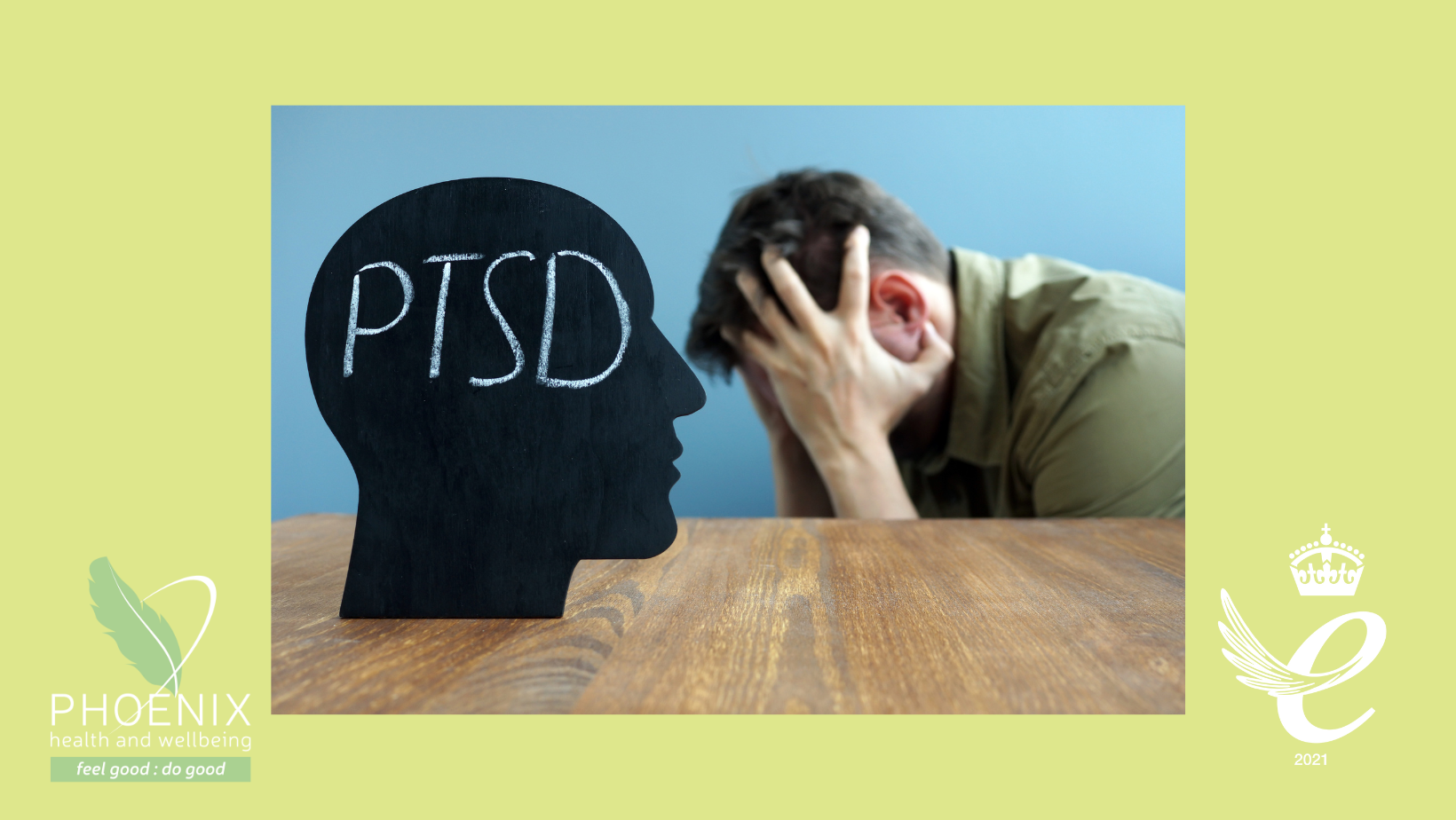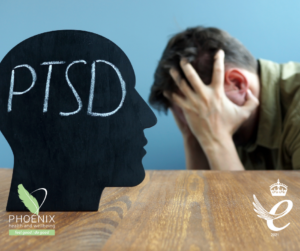
Understanding Post-Traumatic Stress Disorder (PTSD)
Post-Traumatic Stress Disorder (PTSD) is a mental health condition triggered by experiencing or witnessing a traumatic event. Awareness of this condition has increased in the last decade due in no small part to the prevalence among military personnel returning from modern war zones. Indeed, there is still a common misconception that PTSD is specifically war trauma related. This is certainly not the case. PTSD has been a focal point of mental health research in recent years. Study upon study shows that it can result from any traumatic experience or witnessing such an experience.
Each year the 27th June is PTSD Awareness Day. This day is about raising awareness of PTSD and increasing the understanding that PTSD is not an uncommon condition. It is also about hope and spreading the message that tomorrow can be a new day
Read on to discover more about what PTSD is, its causes, symptoms, and the treatments available.
What is PTSD?
 PTSD is characterised by persistent mental and emotional distress following exposure to a traumatic event. The condition was first recognised in military personnel. However, it can affect anyone who has experienced or witnessed life-threatening events such as natural disasters, serious accidents, terrorist acts, rape, or other violent personal assaults.
PTSD is characterised by persistent mental and emotional distress following exposure to a traumatic event. The condition was first recognised in military personnel. However, it can affect anyone who has experienced or witnessed life-threatening events such as natural disasters, serious accidents, terrorist acts, rape, or other violent personal assaults.
According to the Diagnostic and Statistical Manual of Mental Disorders (DSM-5), PTSD symptoms can be categorised into four clusters:
- re-experiencing – symptoms include flashbacks, nightmares, and severe anxiety.
- Avoidance – symptoms manifest as efforts to avoid reminders of the trauma.
- negative changes in thoughts and mood – may involve feelings of hopelessness, memory problems, and loss of interest in activities.
- alterations in arousal and reactivity – symptoms can include being easily startled, feeling tense, and having difficulty sleeping.
Causes of PTSD
PTSD is caused by exposure to trauma, but not everyone exposed to trauma develops the disorder. The risk of developing PTSD depends on various factors, including the severity of the trauma, personal and family history of mental health problems, the individual’s psychological makeup, and the presence of additional stressors post-trauma.
Biological factors play a significant role in the development of PTSD. Studies have shown that individuals with PTSD often have alterations in brain function and structure, particularly in areas involved in emotion regulation, memory, and the stress response. For instance, the hippocampus, which is crucial for memory processing, tends to be smaller in individuals with PTSD (Bremner et al., 1995). Moreover, PTSD has been linked to disregulation of the hypothalamic-pituitary-adrenal (HPA) axis, which controls the body’s reaction to stress (Yehuda, 2002).
Genetic predisposition also contributes to the risk of developing PTSD. Twin studies suggest that genetic factors account for approximately 30% of the variance in PTSD symptoms following trauma (True et al., 1993). Environmental factors, such as lack of social support and ongoing life stressors, further exacerbate the risk.
Symptoms of PTSD
The symptoms of PTSD typically appear within three months of the traumatic event, but sometimes they may surface years later. The symptoms must last more than a month and be severe enough to interfere with daily functioning for a diagnosis to be made.
Re-experiencing Symptoms:
– Flashbacks—reliving the trauma repeatedly.
– Bad dreams or nightmares about the traumatic event.
– Severe emotional distress or physical reactions to reminders of the trauma.
Avoidance Symptoms:
– Staying away from places, events, or objects that are reminders of the experience.
– Avoiding thoughts or feelings related to the traumatic event.
Cognitive and Mood Symptoms:
– Trouble remembering key aspects of the traumatic event.
– Negative thoughts about oneself or the world.
– Distorted feelings of guilt or blame.
– Loss of interest in enjoyable activities.
Arousal and Reactivity Symptoms:
– Being easily startled.
– Feeling tense or “on edge.”
– Having difficulty sleeping.
– Experiencing angry outbursts.
Treatments for PTSD
Effective treatments for PTSD are available, and a combination of therapy and medication is often used.
Psychotherapy: 
- Cognitive Behavioral Therapy (CBT): CBT is one of the most effective forms of therapy for PTSD. It involves exposing the patient to the trauma in a safe way (exposure therapy) and helping them change negative thought patterns. A meta-analysis by Bradley et al. (2005) highlighted CBT’s effectiveness in reducing PTSD symptoms.
- Eye Movement Desensitisation and Reprocessing (EMDR): EMDR is a structured therapy that encourages the patient to focus on the trauma while simultaneously experiencing bilateral stimulation (e.g., side-to-side eye movements), which is believed to help the brain process the traumatic memories and reduce their emotional impact (Shapiro, 2001).
- Prolonged Exposure Therapy: This therapy involves repeated, detailed imagining of the trauma or progressive exposure to trauma reminders. Studies have shown that prolonged exposure therapy can significantly reduce PTSD symptoms (Powers et al., 2010).
Medications:
Medications can be used to manage PTSD symptoms, particularly for those who may not respond well to psychotherapy alone. The most commonly prescribed medications are selective serotonin reuptake inhibitors (SSRIs), such as sertraline and paroxetine (Paxil). These medications can help alleviate depression and anxiety symptoms associated with PTSD (Davidson, 2000).
Other Treatments:
- Group Therapy: Group therapy provides support from others who have experienced similar trauma. Sharing experiences and coping strategies in a group setting can be very beneficial.
- Therapy Animals: Therapy animals, usually dogs, are increasingly being used to help veterans and others with PTSD. These animals provide comfort, companionship, and a sense of safety, which can significantly reduce PTSD symptoms (Yount et al., 2012).
- Mindfulness and Stress Reduction Techniques: Practices such as mindfulness meditation and yoga have shown promise in reducing PTSD symptoms by helping individuals stay grounded and manage stress more effectively (Javnbakht et al., 2009).
To Wrap Up
PTSD is a complex and often debilitating disorder that arises from exposure to severe trauma. Understanding its causes, symptoms, and the range of effective treatments is crucial for providing the necessary support to those affected. While PTSD can have a profound impact on an individual’s life, there is hope through various therapeutic interventions and medications that can help manage and alleviate symptoms. Continued research and awareness are essential in improving treatment outcomes and providing relief to those suffering from PTSD.
For more information about PTSD visit PTSD UK
References used in this Blog and some interesting reading
American Psychiatric Association (2013) “Diagnostic and Statistical Manual of Mental Disorders”. 5th ed. Arlington, VA: American Psychiatric Publishing.
Bremner, J. D., Randall, P., Scott, T. M., et al. (1995) ‘MRI-based measurement of hippocampal volume in patients with combat-related posttraumatic stress disorder’, American Journal of Psychiatry, 152(7), pp. 973-981.
Bradley, R., Greene, J., Russ, E., et al. (2005) ‘A multidimensional meta-analysis of psychotherapy for PTSD’, American Journal of Psychiatry, 162(2), pp. 214-227.
Davidson, J. R. T. (2000) ‘Pharmacotherapy of post-traumatic stress disorder: A review’, Journal of Psychopharmacology, 14(2), pp. 213-223.
Javnbakht, M., Hejazi Kenari, R., and Ghasemi, M. (2009) ‘Effects of yoga on depression and anxiety of women’, *Complementary Therapies in Clinical Practice*, 15(2), pp. 102-104.
Powers, M. B., Halpern, J. M., Ferenschak, M. P., et al. (2010) ‘A meta-analytic review of prolonged exposure for posttraumatic stress disorder’, Clinical Psychology Review, 30(6), pp. 635-641.
Shapiro, F. (2001) Eye Movement Desensitization and Reprocessing: Basic Principles, Protocols, and Procedures. 2nd ed. New York: Guilford Press.
True, W. R., Rice, J., Eisen, S. A., et al. (1993) ‘A twin study of genetic and environmental contributions to liability for posttraumatic stress symptoms’, Archives of General Psychiatry, 50(4), pp. 257-264.
Yehuda, R. (2002) ‘Post-traumatic stress disorder’, New England Journal of Medicine, 346(2), pp. 108-114.
Yount, R. A., Ritchie, E. C., St. Laurent, M., et al. (2012) ‘The role of service dogs in enhancing the recovery of individuals with PTSD’, Journal of Psychiatric Research, 46(5), pp. 564-572.
Phoenix Health and Wellbeing is a charitable social enterprise based in Leeds, West Yorkshire. We offer support in the form of counselling, acupuncture and massage therapies to people who are referred to us by medical professionals, due to their chronic health issues and low incomes. By using our services you are helping us to continue with this life enhancing support.
Find out more about our charitable work here or click here to see the services that we offer
Opening times:
Monday to Thursday: 10.00 to 20.00
Friday and Saturday: 10.00 to 16.00




